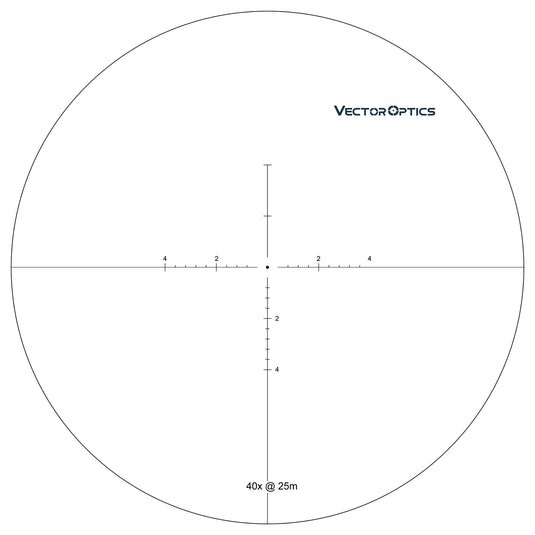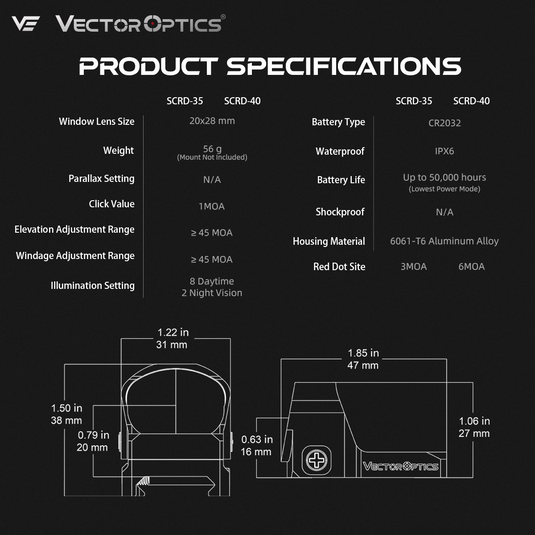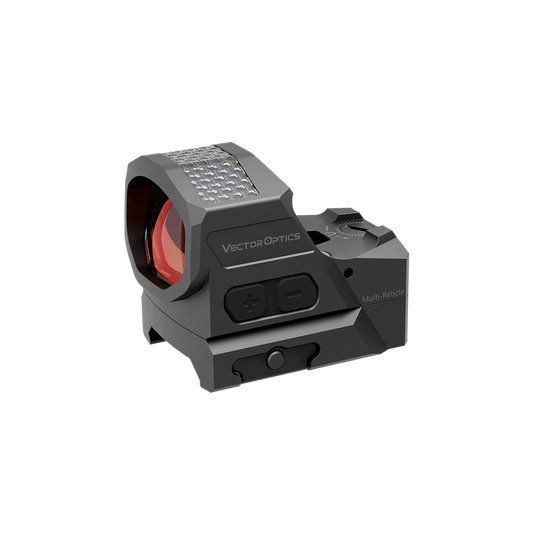LPVOs, low power variable optics.
It is intuitive that the magnification range of LPVOs corresponds with the potential longest shooting distances. Magnifications like 1-6x, 1-8x, and 1-10x are popular choices in the current LPVOs market. Which magnification aligns best with your personal shooting needs and enhances your overall shooting experience? In this article, we are going to explore more factors, SFP VS FFP, field of view, and shooting scenarios, that would play some roles in your final decision.
Continental LPVOs at the Same Power, FFP VS SFP
In the previous blog post, we talked about the reticle differences between FFP and SFP. If you wish to know more, check our previous blog post. Here, we are going to align the differences along with the magnification factor to offer you a comprehensive understanding and aid you in choosing between SFP and FFP at the same power.
FFP scopes typically feature a larger tube diameter when compared to SFP scopes. This is necessary for FFP scope to ensure the reticle is accurate across any magnification. FFP requires a more intricate internal lens design. The increased size of the monotube provides ample space for internal components and large turret size, realizing 100 clicks per round. Simply put, the larger tube size facilitates finer adjustments for precise target shooting. All our Continental FFP LPVOs feature 34mm monotubes.
It is common for shooters to use FFP scopes during the competition when there's limited time for reticle adjustments. FFP guarantees that the reticle remains accurate across all magnifications, providing consistency in various scenarios.
On the other hand, hunters would hunt in low light conditions, such as dawn and dense brush, where the reticle in FFP scopes may be unclear at the lowest magnification. In these situations, hunters prefer SFP scopes, as they offer a visible reticle at any magnification under low-light conditions. Similarly, during IPSC (International Practical Shooting Competition), sporting shooters also favor SFP scopes for close-range shooting, or as they need to target the center dot or to utilize Bullet Drop Compensation (BDC) reticles at high magnification. However, it's worth noting that there are cases where FFP scopes excel for hunters, especially when quick shots are essential. The versatility of FFP scopes can be advantageous in dynamic hunting scenarios.
Due to the more intricate internal lens design, FFP scopes tend to be heavier and pricier than SFP scopes with similar specifications. Take our SCOC-44, SCOC-23T, and SCFF-31 as examples. SCFF-31 with FFP features a larger tube diameter and weighs more than SCOC-23T and SCOC-44.
|
Continental x6 1-6x24i Tactical Riflescope |
Continental x6 1-6x24 Tactical LPVO Riflescope |
34mm Continental x6 1-6x28 FFP Riflescope |
|
SCOC-44 |
SCOC-23T |
SCFF-31 |
|
SFP |
SFP |
FFP |
|
30mm Tube Dia |
30mm Tube Dia |
34mm Tube Dia |
|
Fiber Reticle VET-FDR |
Etched Glass BDC VET-BTR |
Etched Glass VCT-BNW |
|
510g / 18.0oz |
510g / 18.0oz |
650g / 22.9oz |
 |
 |
 |
The reticle may blur, you can type in the SKU in the search bar to figure it out. Thank you for your understanding.
Among Continental 1-6x LPVOs, focal planes, weight, as well as tube diameter are the key factors you need to consider.
1-6x VS 1-8x VS 1-10x
The field of view at the high magnification is another factor that would impact your decision. As magnification increases, the field of view decreases. Shooters may find a narrow field of view uncomfortable, especially when engaging targets at high magnification. It's crucial for shooters to evaluate their intended use cases. If shooters anticipate engaging targets in long-distance scenarios where they find a slight compromise in image clarity and a narrower field of view are acceptable, then 1-10x might be a suitable choice for their specific needs and preferences.
I know a lot of points are kind of tricky and confusing. That is because LPVO’s shortcomings come along with its benefits. LPVOs focus on providing you versatility with true 1x power. The compromise of viewing experience at high magnifications is forgivable. Most manufacturers are likely to implement high-quality glass, like ED (Extra-Low Dispersion) glass, to minimize the negative experience and enhance image clarity and sharpness. I guess the key benefit of LPVOs is their convenience, allowing shooters to realize different purposes without the need to change scope.
To sum up, which magnification range fits you the best depends on the flexibility you desire. If you’re on a budget but interested in trying LPVOs, 1-6x is great for you. 1-6x is fairly enough for hunting or practicing close-range shooting and works well on an AR platform. 1-8x maintains the capability of the 1-6x while offering two more powers to play with. 1-10x is emerging in the market for potential shooting over 800 yards. It is ideal for sport shooting enthusiasts who seek to practice shooting across a broad range of distances.
|
34mm Continental x6 1-6x28 FFP Riflescope |
Continental x8 1-8x24i ED Fiber LPVO Riflescope |
Continental x10 1-10x28 ED FFP Riflescope VET-RAR |
|
SCFF-31 |
SCOC-45 |
SCFF-48 |
|
FFP |
SFP |
FFP |
|
650g |
530g |
651g |
|
8-4.6mm Exit Pupil |
6.5-3.0mm Exit Pupil |
8.5-2.8mm Exit Pupil |
|
34mm Tube Dia |
30mm Tube Dia |
34mm Tube Dia |
|
122.5-20.4 ft @100 yards FOV |
122.5-20.4 ft @100 yards FOV |
123-12.3ft @ 100yds FOV |
|
German Schott HD Glass |
ED Glass |
ED Glass |
 |
 |
 |
|
-Traditional and budget-friendly -Great viewing experience at any power |
-Two more powers to play with -A bit tradeoff of image clarity at the high magnification (under low light condition) |
-Trending and high-value -More versatility for people plan to shoot across broad distance range |
The reticle may blur, you can type in the SKU in the search bar to figure it out. Thank you for your understanding.

































